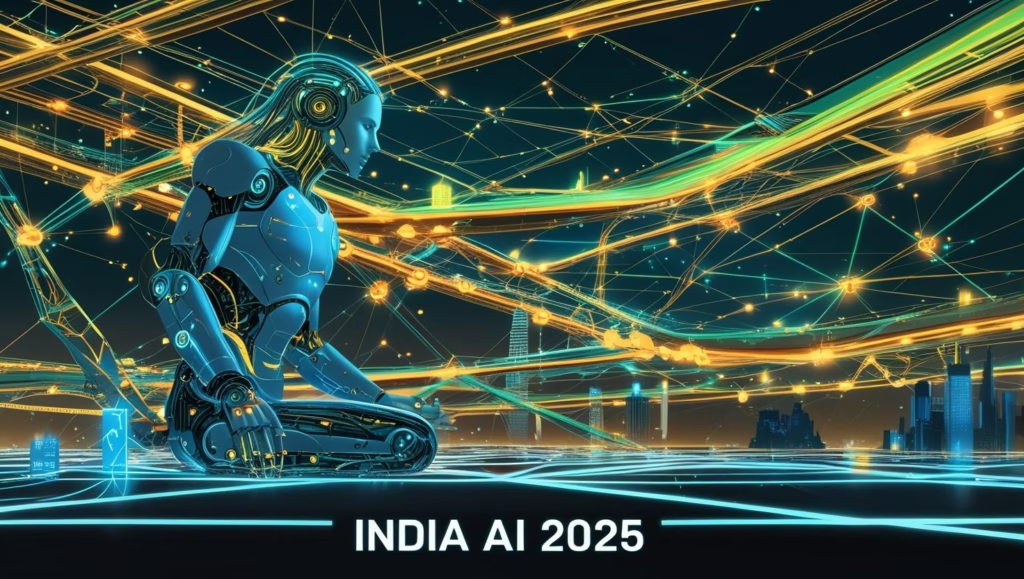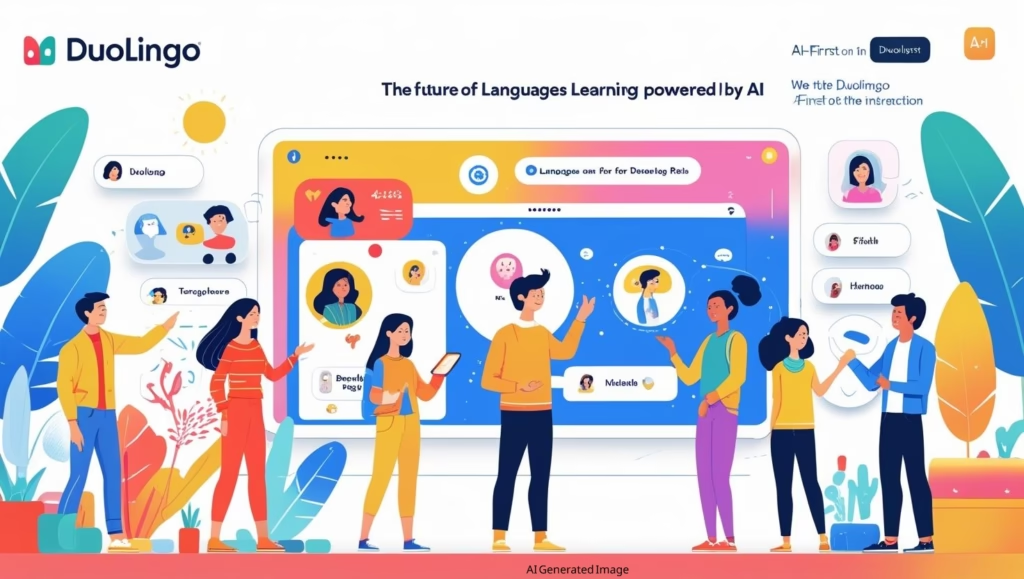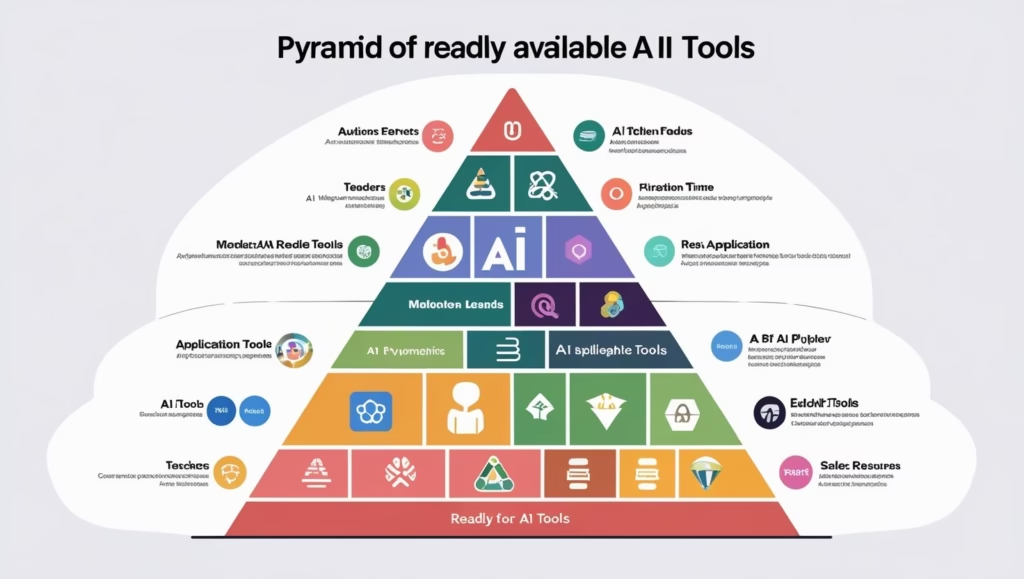India’s AI Odyssey: Navigating the Future of Intelligence
Artificial Intelligence (AI) is no longer a futuristic concept whispered in tech circles; it’s a tangible force, reshaping industries, economies, and daily lives across the globe. From powering personalized recommendations to revolutionizing medical diagnostics, AI’s influence is pervasive and ever-expanding. In this global race of innovation, India is carving out its unique niche, rapidly emerging as a significant player in the AI landscape. Analyzing AI development in India is not just timely, but crucial, offering insights into a nation poised to leverage AI for inclusive growth and global impact.
Current Status of AI in India: A Vibrant Landscape
India’s journey with AI is marked by a dynamic and rapidly evolving landscape. The country’s strong foundation in software and IT services has provided a fertile ground for AI adoption and innovation.
Adoption Rates and Industry Penetration:
AI adoption in India is seeing remarkable growth across various sectors. According to a 2025 report, India leads the world in total AI deployment in business, with 59% of companies having implemented AI, surpassing the global average of 42%. This indicates a strong appetite for integrating AI into core business operations.
Key sectors actively leveraging AI include:
- Healthcare: AI is transforming healthcare through diagnostic tools, drug discovery, personalized treatment plans, and even remote patient monitoring. For instance, AI-powered solutions are assisting in early disease detection and optimizing hospital operations.
- Finance: The financial sector is embracing AI for fraud detection, risk assessment, personalized banking services, algorithmic trading, and customer support chatbots. Fintech firms are using AI-based credit scoring to expand financial access to unbanked populations.
- Manufacturing: AI is enhancing efficiency, quality control, predictive maintenance, and supply chain optimization in manufacturing. Robotics and automation, powered by AI, are becoming increasingly prevalent.
- Agriculture: AI-enabled crop monitoring, predictive analytics for weather patterns, and smart irrigation systems are revolutionizing agricultural productivity and risk management. Microsoft’s AI Sowing App, for example, has boosted groundnut yields in Andhra Pradesh by 30%.
- Governance and Public Services: AI is facilitating real-time government decision-making, enhancing public service delivery, and improving law enforcement. The Ministry of Road Transport utilizes AI for optimizing traffic flow and enhancing road safety, while Delhi Police’s Crime Mapping Analytics uses AI for hotspot identification.
Notable Achievements and Statistics:
India’s progress in AI is reflected in several key metrics:
- Global Skill Penetration: India ranks first globally in AI skill penetration with a score of 2.8, ahead of the US (2.2) and Germany (1.9), according to the Stanford AI Index 2024. This highlights a strong talent pool.
- Talent Concentration: AI talent concentration in India has grown by a remarkable 263% since 2016, positioning the country as a major AI hub. India is home to 16% of the world’s AI talent.
- Industry Growth: The Indian AI industry is projected to reach USD 28.8 billion by 2025, growing at a Compound Annual Growth Rate (CAGR) of 45%.
- Workplace Adoption: A significant 70% of Indian employees used AI at work in 2024, a substantial increase from 50% in the previous year, demonstrating rapid integration into workplaces.
- Private Investment: In 2023, India secured US$ 1.4 billion (approximately ₹11,943 crore) in private AI investments, ranking 10th globally. India, alongside China, is one of only two developing countries with substantial AI funding.
- Patent Filings: Between 2010 and 2025, over 86,000 AI-related patents were filed in India, accounting for more than 25% of all technology patents in the country. Approximately 63% of these originated in India. Notably, Generative AI (GenAI) accounts for 28% of India’s AI patent filings, positioning the country among the top five globally in this domain.
- Developer Population: India has emerged as the fastest-growing developer population globally and ranks second in public generative AI projects on GitHub.
Role of Leading Universities, Research Labs, and Major Corporations:
India’s academic institutions and corporate giants are at the forefront of AI research and development:
- Indian Institutes of Technology (IITs): Institutions like IIT Madras, IIT Delhi, IIT Bombay, and IIT Hyderabad are leading the charge, offering comprehensive AI curricula and hosting dedicated research labs. IIT Hyderabad, for instance, has a strong focus on AI research and education.
- Indian Institute of Science (IISc), Bengaluru: IISc is renowned for its advanced research in areas like image processing, knowledge graphs, and natural language processing.
- International Institute of Information Technology (IIIT) – Hyderabad: IIIT Hyderabad is a prominent institute offering strong programs in AI and machine learning with advanced research facilities.
- Major Corporations: Indian IT behemoths like Infosys, TCS, Wipro, and Tech Mahindra are investing heavily in AI research, developing their own AI platforms and solutions, and collaborating with startups and academia. Through its Infosys Nia platform, Infosys offers AI solutions for automation and data-driven decisions.
Government Initiatives and Policies: Paving the Way for “AI for All”
Recognizing AI’s transformative potential, the Indian government has launched a series of strategic initiatives and policies to foster a robust and inclusive AI ecosystem. The guiding principle is “AI for All,” aiming to democratize technology and ensure its benefits reach every segment of society.
Major Government Programs and Funding Strategies:
- IndiaAI Mission (Approved March 2024): This landmark initiative, with an allocation of ₹10,300 crore (approximately US$ 1.2 billion) over five years, is designed to position India as a global leader in AI. It focuses on seven foundational pillars:
- IndiaAI Compute: Aims to build a high-end scalable AI computing ecosystem with a target of 10,000 or more Graphics Processing Units (GPUs). As of April 2025, empaneled bidders have offered 14,517 GPUs, exceeding the initial target.
- IndiaAIFutureSkills: Focuses on talent development, aiming to increase the number of AI graduates, postgraduates, and PhD scholars, and establishing Data and AI Labs in Tier 2 and Tier 3 cities.
- IndiaAI Startup Financing: Provides support to early-stage AI ventures.
- IndiaAI Innovation Centre (IAIC): Launched a Call for Proposals in January 2025, inviting startups, researchers, and entrepreneurs to collaborate on building state-of-the-art foundational AI models trained on Indian datasets. By February 2025, 67 proposals were received, with 22 focused on Large Language Models (LLMs) and Large Multimodal Models (LMMs), and 45 on domain-specific models for sectors like healthcare and finance.
- IndiaAI Datasets Platform (AIKosh): Launched in March 2025, this platform seeks to enhance access, quality, and utilization of public sector datasets to make them AI-ready.
- IndiaAI Applications Development Initiative: Supports the creation of practical AI solutions.
- Safe & Trusted AI: Focuses on responsible AI projects, with eight projects selected to address areas like AI bias mitigation, ethical AI frameworks, privacy-enhancing tools, and deepfake detection.
- Digital India Bhashini Initiative: This initiative boosts AI-powered vernacular language accessibility, crucial for a linguistically diverse nation like India.
- BharatGen: The world’s first government-funded multimodal LLM initiative, BharatGen was launched in 2024 to facilitate the development of indigenous foundational models.
- Sarvam-1 AI Model: Optimized for Indian languages, this 2-billion-parameter model supports ten major Indian languages and is designed for applications like language translation and content generation. This is a testament to the focus on India-specific AI solutions.
- Hanooman’s Everest 1.0: Developed by SML, this multilingual AI system supports 35 Indian languages, with plans for expansion to 90.
Collaborations and Focus Areas:
The government actively promotes collaborations between government bodies, industry players, and academic institutions. The IndiaAI Mission itself is a testament to this collaborative spirit. Focus areas include:
- Ethical AI and AI Safety: The “Safe & Trusted AI” pillar of the IndiaAI Mission highlights the government’s commitment to responsible AI development, addressing concerns around bias, privacy, and explainability.
- Talent Development: Significant emphasis is placed on upskilling and reskilling the workforce to meet the growing demand for AI professionals. The National Strategy on AI by NITI Aayog underscores the urgent need to upskill 10 million youth.
Emerging AI Startups and Innovation Ecosystem: The Engine of Disruption
India’s vibrant startup ecosystem is a crucial driver of AI innovation, fueled by a growing pool of entrepreneurial talent and supportive infrastructure.
Promising AI Startups:
The Indian AI startup scene is buzzing with creativity and groundbreaking solutions. Here are a few notable examples:
- Sarvam AI: Co-founded by Vivek Raghavan, Sarvam AI is gaining significant traction for developing India’s first home-grown, multilingual Large Language Model (LLM), Sarvam 1. Backed by prominent investors like Lightspeed and Peak XV, their mission is to build multi-modal, multi-scale foundational models that make AI familiar and accessible to every corner of India, and unlock intelligence for enterprises without data leaving borders.
- Krutrim AI: Launched by Ola’s founder Bhavish Aggarwal, Krutrim AI is another key player in developing large language models specifically for Indian languages, directly competing in the indigenous LLM space.
- Yellow.ai: A leading conversational AI platform, Yellow.ai provides robust conversational CX solutions for businesses, helping them enhance customer engagement and operational efficiency.
- Haptik: Haptik has established itself as a frontrunner in conversational AI, specializing in intelligent chatbots and virtual assistants.
- Arya.ai: Focusing on autonomous AI systems and deep learning solutions, Arya.ai caters to critical industries like insurance, banking, and autonomous vehicles.
- CoRover P. Limited: Specializing in AI-powered chatbots, CoRover aims to revolutionize both operational efficiency and customer engagement.
Startup Ecosystem Support:
The burgeoning AI startup ecosystem is well-supported by:
- Incubators and Accelerators: India hosts over 520 tech incubators and accelerators, ranking third globally in active programs. Approximately 42% of these were established in the past five years, catering to the evolving needs of Indian startups. AI-focused accelerators like T-Hub MATH provide crucial mentorship in product development, business strategy, and scaling.
- Venture Capital (VC) Funding: Investor interest in Indian AI startups is surging. In 2024, Indian AI startups raised $780.5 million in total funding, a 39.9% increase from the previous year, signaling healthy investor interest despite global macroeconomic slowdowns. GenAI startup funding in India surged over six times quarter-on-quarter, reaching USD 51 million in Q2 FY2025. This cautious optimism is creating a more grounded and sustainable AI investment landscape, with investors increasingly focused on startups solving specific problems in enterprise automation, fintech, and supply chains.
- Public-Private Partnerships: The government actively encourages collaborations between the public sector and private enterprises, creating a supportive environment for AI innovation. The IndiaAI Mission itself is a prime example of such partnerships.
Examples of Successful AI Applications:
Beyond the core technology, India is witnessing the successful deployment of AI in various practical applications:
- Financial Inclusion: AI-based credit scoring models are enabling financial institutions to assess creditworthiness for individuals without traditional credit histories, bringing more people into the formal financial system.
- Smart Cities: AI is being used in urban planning for traffic management, waste optimization, and enhancing public safety through intelligent surveillance systems.
- Education: AI-powered personalized learning platforms, intelligent tutoring systems, and automated assessment tools are transforming the education sector, making learning more accessible and effective.
- Language Technologies: With projects like Sarvam-1 and Hanooman’s Everest 1.0, India is at the forefront of developing AI models that understand and generate content in diverse Indian languages, bridging the digital divide.
Challenges and Opportunities: Navigating the AI Frontier
Despite the impressive strides, India’s AI journey is not without its hurdles. Understanding these challenges is crucial for charting a sustainable path forward, while recognizing unique opportunities can propel India to a leadership position.
Key Obstacles Facing AI Growth:
- Talent Shortage and Skill Gap: While India boasts high AI skill penetration, a significant gap remains in the availability of formally skilled AI professionals. Only about 4% of India’s workforce is formally skilled in AI and related digital technologies. Bridging this gap requires continuous upskilling and reskilling initiatives.
- Inadequate Data Ecosystem: India suffers from fragmented, low-quality, and poorly annotated datasets, which are essential for training robust AI models. While initiatives like the National Data and Analytics Platform (NDAP) aim to unify data, challenges persist in data standardization and accessibility.
- Limited Research and Development (R&D) Investment: India’s AI research spending, under 0.1% of GDP, lags significantly behind global leaders like the US and China. This limited investment can curtail the development of indigenous foundational AI technologies.
- Regulatory Hurdles and Data Privacy Concerns: The absence of comprehensive AI-specific policies and guidelines creates ambiguity for businesses and developers. As AI adoption grows, concerns around data privacy, algorithmic bias, and ethical use of AI are increasing, necessitating robust regulatory frameworks.
- Infrastructure Gaps: Uneven internet access, particularly in rural areas, can limit widespread AI adoption. While projects like BharatNet aim to improve last-mile connectivity, implementation challenges remain.
- Slow Startup Scaling: While India hosts over 3,000 AI startups, many struggle with access to sufficient capital and mentorship beyond the early stages.
Unique Opportunities for India:
Despite the challenges, India possesses unique strengths that can enable it to lead and differentiate itself in the global AI race:
- Large and Diverse Dataset: India’s massive population and linguistic diversity present an unparalleled opportunity to build unique, India-specific AI models, particularly in natural language processing and voice AI, that cater to a multitude of languages and dialects. This “Bharat-scale” approach is a significant differentiator.
- Cost-Effective Talent Pool: India’s large pool of skilled software developers offers a cost advantage in AI development and deployment.
- Digital Public Infrastructure (DPI): India’s robust DPI, including Aadhaar, UPI, and DigiLocker, provides a strong foundation for integrating AI into financial and governance platforms, driving digital transformation and inclusion.
- Focus on “AI for Social Good”: India’s emphasis on leveraging AI to solve societal problems, such as in agriculture, healthcare, and education, can position it as a leader in ethical and impactful AI development.
- Government Support: The dedicated IndiaAI Mission and its substantial funding demonstrate strong government backing, providing a clear strategic direction for AI development.
- Growing Generative AI Landscape: India is rapidly ascending in the Generative AI space, with a high proportion of AI patent filings focused on GenAI, signaling a strong innovation focus in this cutting-edge area.
Future Outlook: A Horizon of Possibilities
The future of AI in India appears incredibly promising, poised to become a significant driver of economic growth, innovation, and social progress.
Upcoming Trends and Government Plans:
- Continued Growth of Indigenous LLMs: The success of models like Sarvam-1 and Krutrim AI indicates a strong future for India-specific LLMs, which will be crucial for empowering users and businesses in local languages.
- AI Integration Across Sectors: Expect deeper integration of AI into traditional sectors like manufacturing, logistics, and retail, driving automation and efficiency.
- Emphasis on Responsible AI: The government’s focus on “Safe & Trusted AI” will likely lead to the development of more robust ethical AI frameworks and regulations, ensuring responsible deployment.
- Increased R&D Investment: The IndiaAI Mission’s focus on compute infrastructure and innovation centers suggests a push towards increased domestic R&D, fostering foundational AI research.
- AI for Climate and Sustainability: AI is likely to play an increasingly important role in addressing climate change challenges, with projects like AI-based climate forecasting and multi-hazard susceptibility mapping.
Q3: What are the key government initiatives supporting AI in India? A3: The most significant initiative is the IndiaAI Mission, approved in March 2024 with a budget of ₹10,300 crore. It focuses on seven pillars: AI Compute, FutureSkills, Startup Financing, Innovation Centre, Datasets Platform, Applications Development, and Safe & Trusted AI. Other initiatives include the Digital India Bhashini Initiative and support for indigenous LLMs like BharatGen.
Q4: What are the major challenges for AI growth in India? A4: Key challenges include a shortage of skilled AI professionals, an inadequate ecosystem of high-quality, annotated data, relatively low R&D investment compared to global leaders, regulatory uncertainties regarding data privacy and ethical AI, and infrastructure gaps in internet connectivity, especially in rural areas.
Q5: What are some notable Indian AI startups? A5: Some prominent Indian AI startups include Sarvam AI (developing indigenous LLMs), Krutrim AI (focusing on Indian language models), Yellow.ai (conversational AI), Haptik (conversational AI), Arya.ai (autonomous AI for finance/insurance), and CoRover P. Limited (AI-powered chatbots).
Q6: How is AI impacting employment in India? A6: While there are concerns about job displacement, many experts, like Infosys founder N.R. Narayana Murthy, believe that AI will primarily transform jobs, leading to increased productivity and the creation of new, more complex roles, rather than a net job loss. AI is expected to boost productivity and create new employment opportunities.
Keywords: AI in India, artificial intelligence India, India AI development, AI startups India, government AI initiatives, Indian AI landscape, AI adoption India, AI market India, AI research India, AI talent India, ethical AI India, AI policies India, digital India AI, AI in healthcare India, AI in finance India, AI in manufacturing India, AI in agriculture India, generative AI India, large language models India, Indian AI companies, AI investment India, AI regulations India, AI challenges India, AI opportunities India, future of AI in India, emerging AI trends India, AI for social good India, IndiaAI Mission, Sarvam AI, Krutrim AI, AI ecosystem India, digital public infrastructure India
Disclaimer: Transparency is important to us! This blog post was generated with the help of an AI writing tool. Our team has carefully reviewed and fact-checked the content to ensure it meets our standards for accuracy and helpfulness. We believe in the power of AI to enhance content creation, but human oversight is essential.





